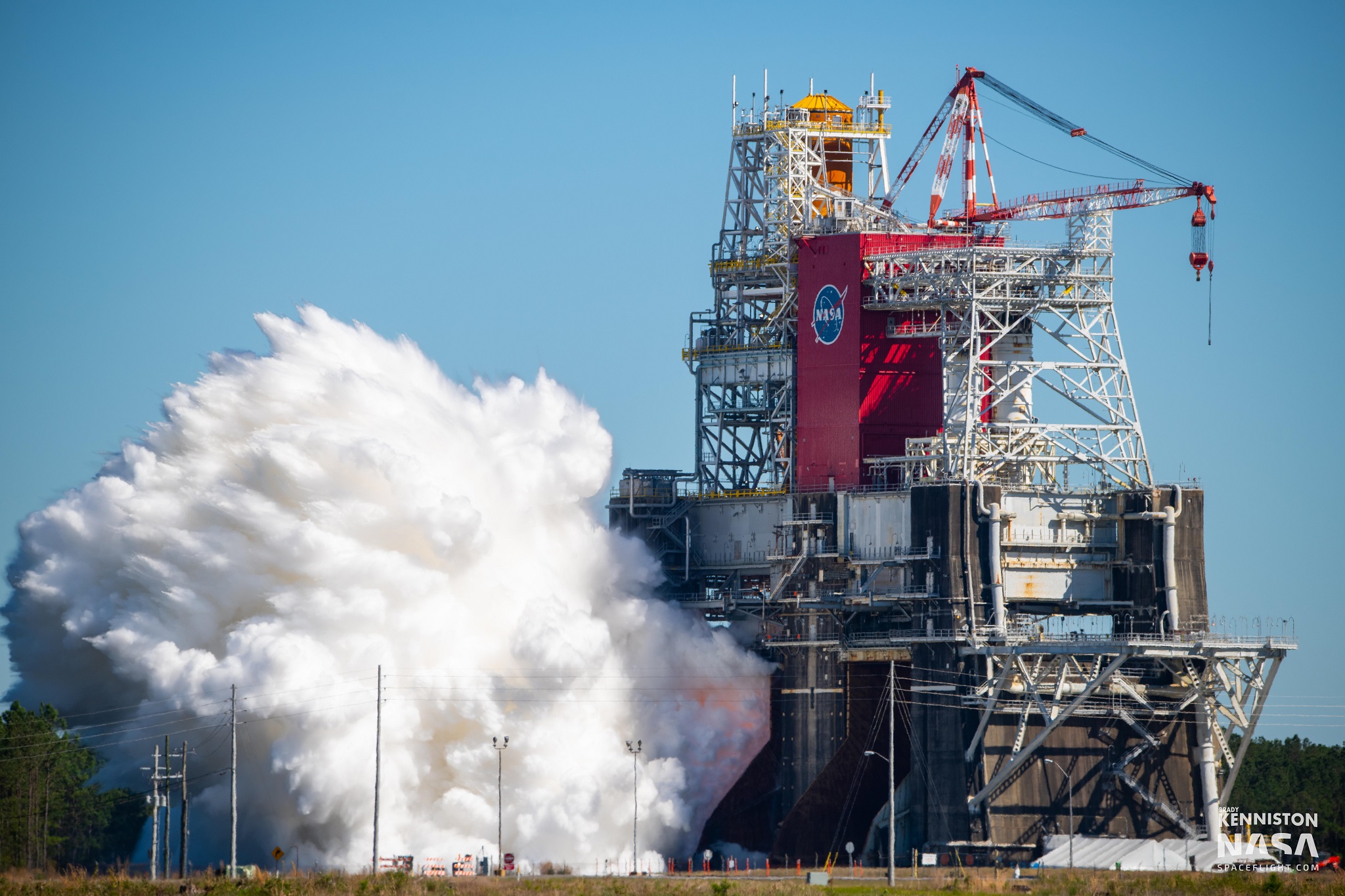Engineers with NASA’s Space Launch System program and prime Core Stage contractor Boeing continue to review terabytes of data from the now-complete, once-in-a-generation Green Run design verification test campaign.
The Core Stage was the major new piece developed for the agency’s SLS launch vehicle, and both NASA and Boeing are pleased with results seen so far.
The big orange rocket looks like the Space Shuttle’s less enormous orange External Tank, but among other Shuttle Orbiter components contained in the SLS Core Stage is all the Main Propulsion System .
The eight test cases in the Green Run series culminated in a second Hot-Fire test on March 18 with Core Stage-1, the Artemis 1 flight vehicle, firing for a full-duration 500 seconds.
After fine-tuning a few parameters based on observations and analysis of previous tests, the different elements of the MPS, from the propellant and feed systems to hydraulics/thrust vector control , pneumatics, and pressurization, tracked closely to updated analytical models in March 2021.
The core stage has four hydraulic systems, one for each RS-25 engine; the systems simultaneously provide the hydraulics for engine control, managed by the engine, and engine gimbaling, managed by the stage.
As the stage TVC began moving all four engines at their maximum required gimbal speed, the demand on hydraulics caused a couple of measurements to drop below limits.
“We saw a little bit more pressure drop, and we ended up just busting that limit.
Over the summer of 2020, the tests built on top of one another, with MPS pneumatic and hydraulic checkouts demonstrating that the stage’s mechanical systems worked within operational limits as commanded via the ground control system.
The sixth and final tropical system to impact Louisiana and the nearby Stennis area was the worst; Hurricane Zeta passed directly through the Stennis area, though weakened as it moved inland.
“We always talked about this ground run that we’re doing at Stennis, it’s the maximum demand.
Operation of the MPS and the RS-25 engines becomes interdependent shortly after the engines reach mainstage operation.
At that point, gaseous hydrogen tapped off the running engines is both pressurizing the LH2 tank and powering the stage’s hydraulics — which are providing the hydraulic pressure to gimbal the engines and for the engines to maintain and control their valve positions.
Jackson noted that NASA and Boeing had the ability to adjust the pressurization flow by changing out some orifices within the system if that had been warranted.
The system’s actual performance tracked right on top of the model predictions, so the option isn’t needed.
The three different gimbal profiles provided data sets with different initial conditions, but Jackson said the first gimbal test was especially stressing to the system.
During the countdown, prior to ignition, all the equipment in the engine section is cold soaked, surrounded by cryogenic propellant lines during hours of tanking and engine chilldown.
